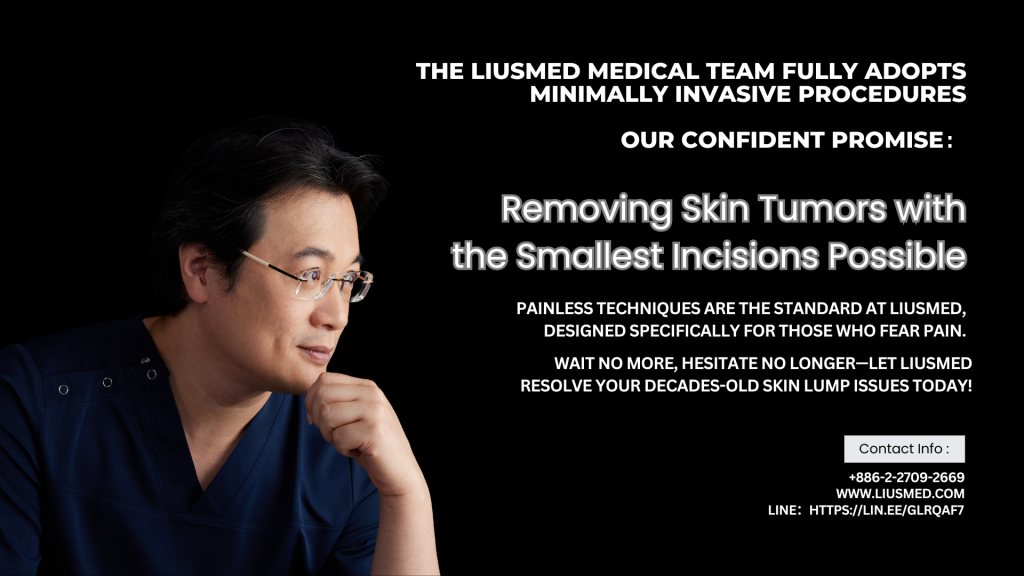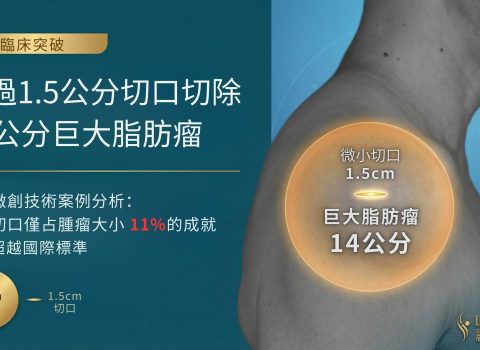South Korean actress Han Ye Seul, also known as “Baby-faced Barbie”, is a well-known actress with charming looks and a great figure.

A few years ago, Han Ye Seul revealed on her Instagram that she had a lipoma under her left armpit and underwent surgery to remove it. However, due to medical negligence, the wound became ulcerated, causing her great distress.
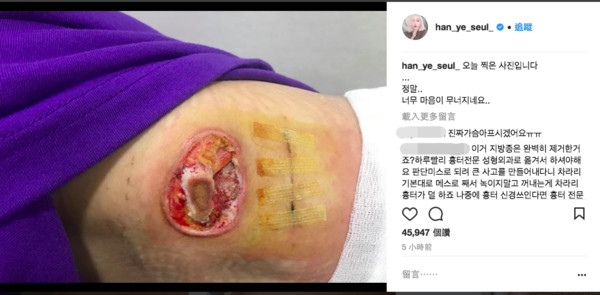
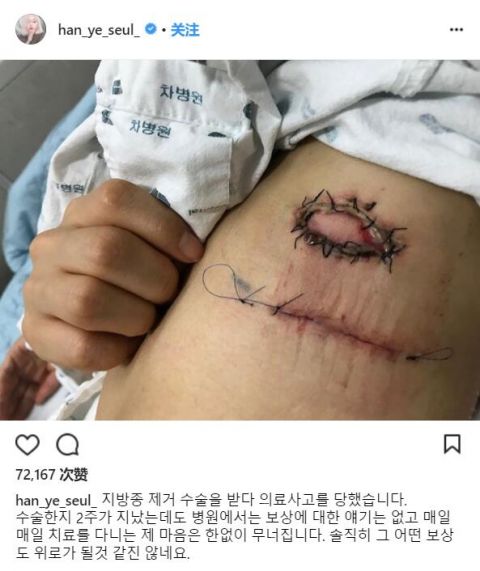
Medical dispute caused by lipoma surgery
Han Ye Seul’s Instagram post attracted attention, and Korean programs discussed this medical dispute.

Link to the program discussion: Han Ye Seul’s lipoma surgery medical dispute
According to the surgeon’s explanation, Han Ye Seul is a public figure who needed to consider her appearance for work purposes. Therefore, the surgical method was to open the incision from below the lipoma, dig out the lipoma upwards, and then remove it from the incision below to keep the skin above intact without scars. However, during the process of digging out the lipoma, the skin above was accidentally pierced, causing a wound in that area. Later, the wound became ulcerated, and after debridement and suturing, it became a round scar.
From the two wounds, it appears that the hospital not only made mistakes during the surgery but also caused the wound to become ulcerated after the surgery, and the suturing technique was also not ideal. The surgical incision below was estimated to be 7-9 cm, and the doctor diagnosed the size of the lipoma as 5-8 cm during the initial consultation. The scar after suturing was not very smooth and beautiful. The wound on the top was even more terrible. After being debrided, the suturing that was originally intended to preserve the scarless area has now become this condition.
Related reading: Blogger shares experience of 9cm lipoma surgery
Pre-surgery recommendations for lipoma surgery
Several recommendations for those who have not considered surgery for a lipoma or are considering undergoing surgery:
1.The importance of choosing a treatment method
Lipoma excision is a common outpatient surgery and is not a complex surgery. However, considering the location, size, and shape of the lipoma, a doctor’s technical capabilities can be evaluated in several directions, such as minimizing the wound, removing the lipoma completely, reducing bleeding, and reducing scar formation and postoperative repair level, to choose the ideal treatment method.
2.Communicate with the doctor before surgery
Some patients have different needs, perhaps for work or aesthetics, and hope to limit the surgical scars within certain conditions. Doctors and patients should consider the most appropriate treatment method. If the complexity of the surgery increases, and the doctor’s mastery of the surgery is not proficient, patients may face risks that will lead to more physical and mental exhaustion in the future.
3.Pay attention to changes in the wound after surgery
Regardless of the type of surgery, postoperative care should be followed according to the doctor’s instructions, and changes in the wound should be closely monitored. Once abnormal bleeding, swelling, discoloration, or other phenomena are observed, postoperative care advice should be sought or a follow-up visit arranged as soon as possible.
4.Surgery before the lipoma grows too large
Although lipomas are mostly benign tissues that basically do not affect human health, considering the location of the lipoma, it may affect appearance, compress nerves, cause pain, or cause inconvenience in daily life. Clinically, many doctors suggest observation without immediate surgery. Because I have treated quite a few giant lipomas (over 20 cm), most of the patients who come to my clinic have been suffering from the lipoma for several years or even decades. I believe that growing lipomas are skin tumors that need active surgical treatment and should not be left until they are very large. Therefore, it is recommended to handle it as soon as possible if the diameter of the lipoma increases by more than 1 cm per year.
To reduce the trouble of surgery and recovery for patients, I have set giant and multiple lipoma surgeries as outpatient surgeries, using the smallest incision to complete the surgery. Not only can it reduce postoperative repair, but patients can also take care of themselves at home without hospitalization. For patients who have lipomas but have been hesitant to seek treatment, this approach can eliminate many fears.
Related reading:
- A record of the surgical removal of a giant lipoma – taking off my 15-year burden. How to remove subcutaneous tumors?
- 15cm lipoma removal on the back – subcutaneous tumors | Lipoma | Epidermal Cyst surgery record
Here are a few case photos of me performing lipoma removal surgery (wound less than 5 cm):
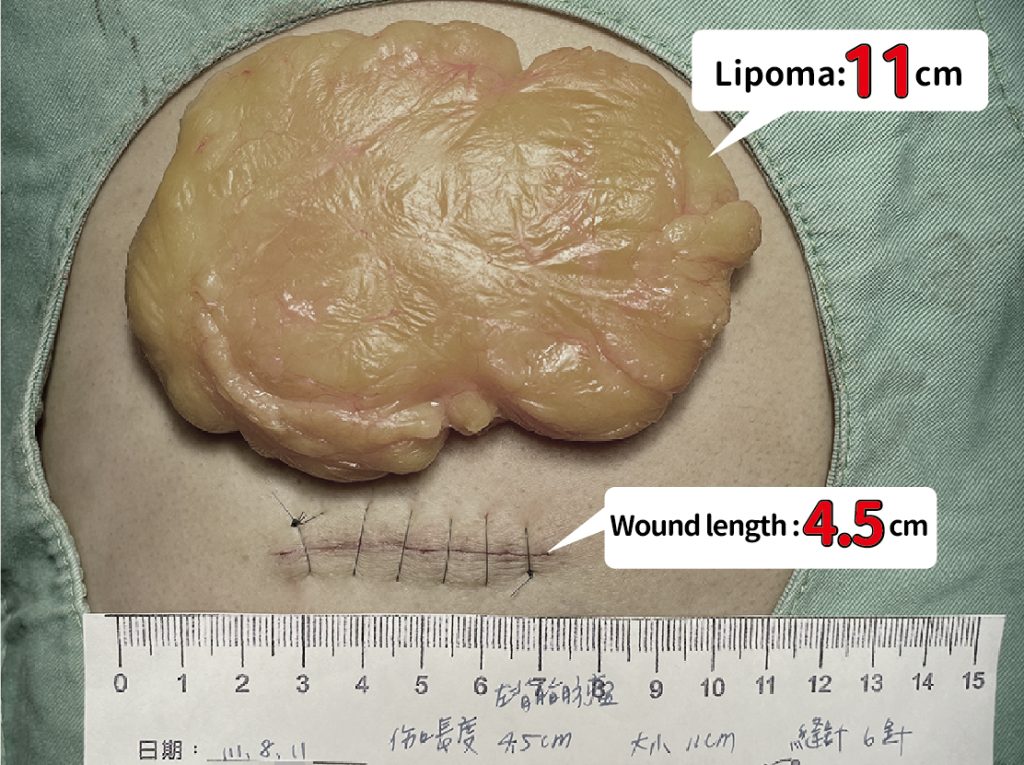
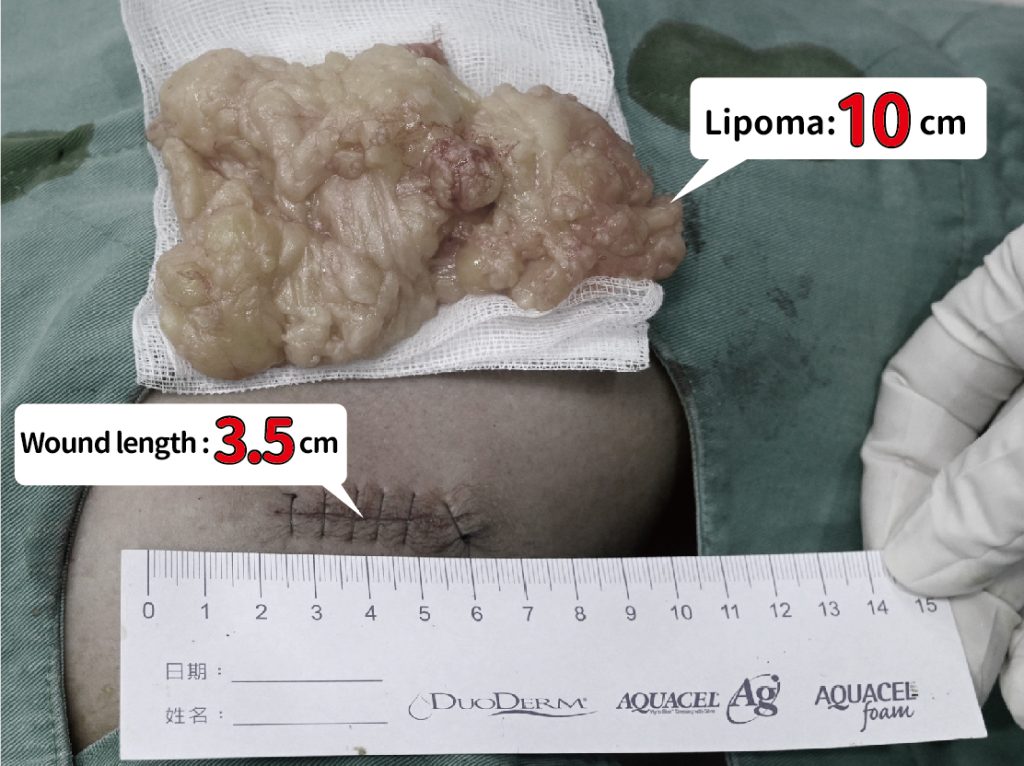
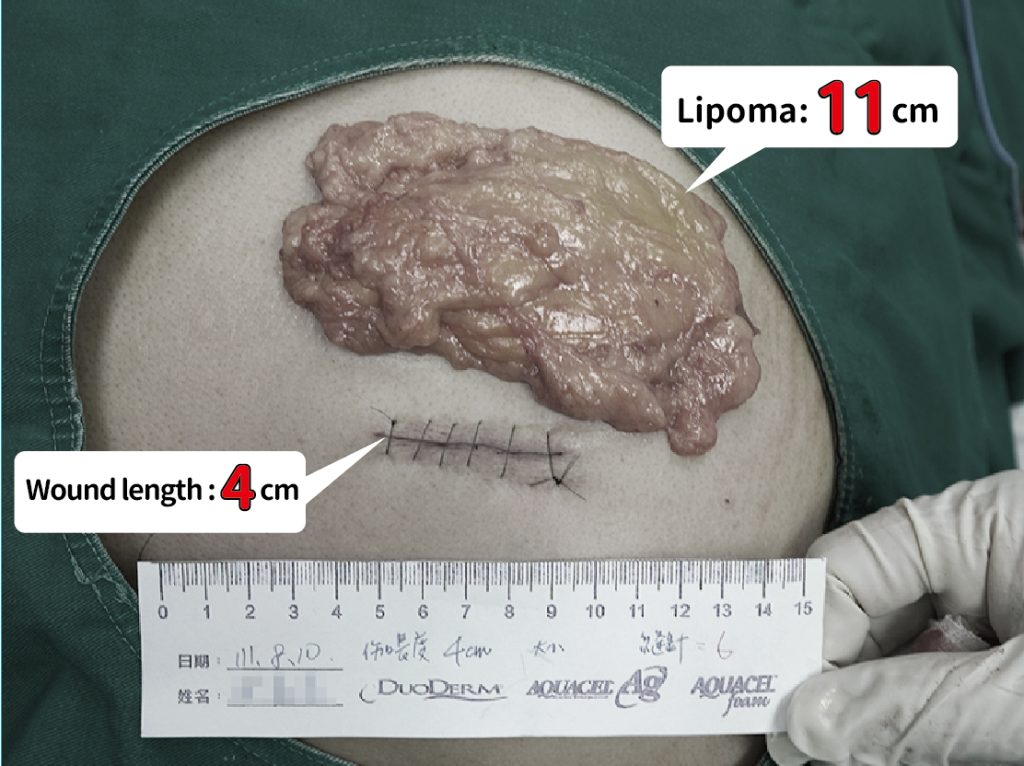
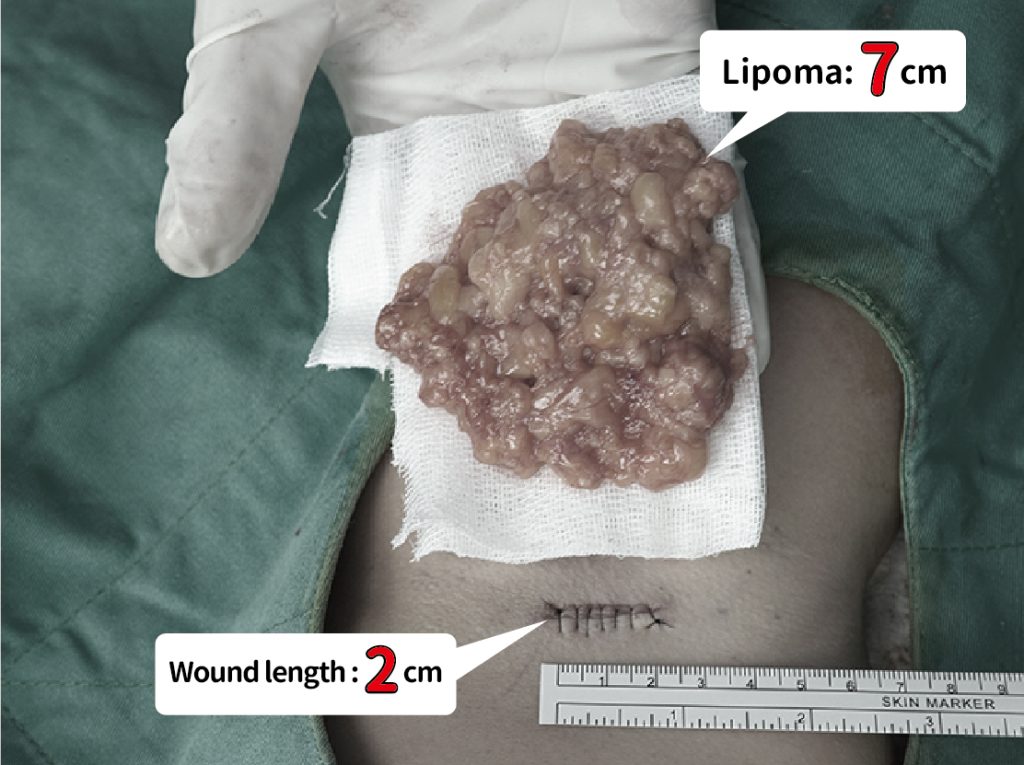
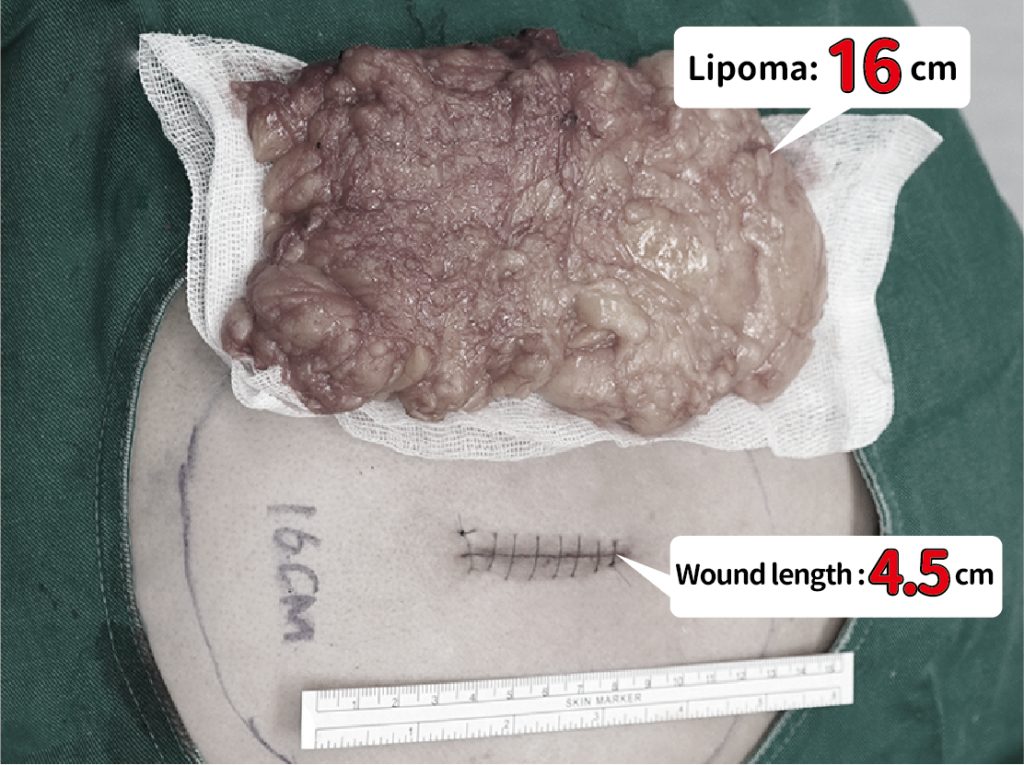
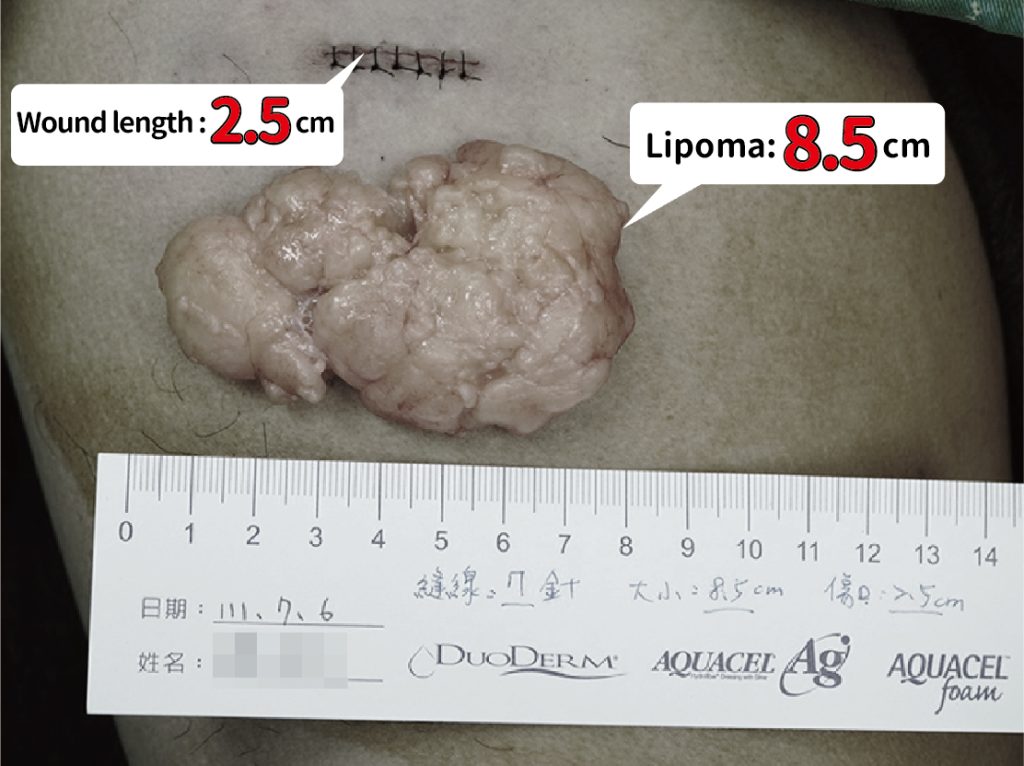
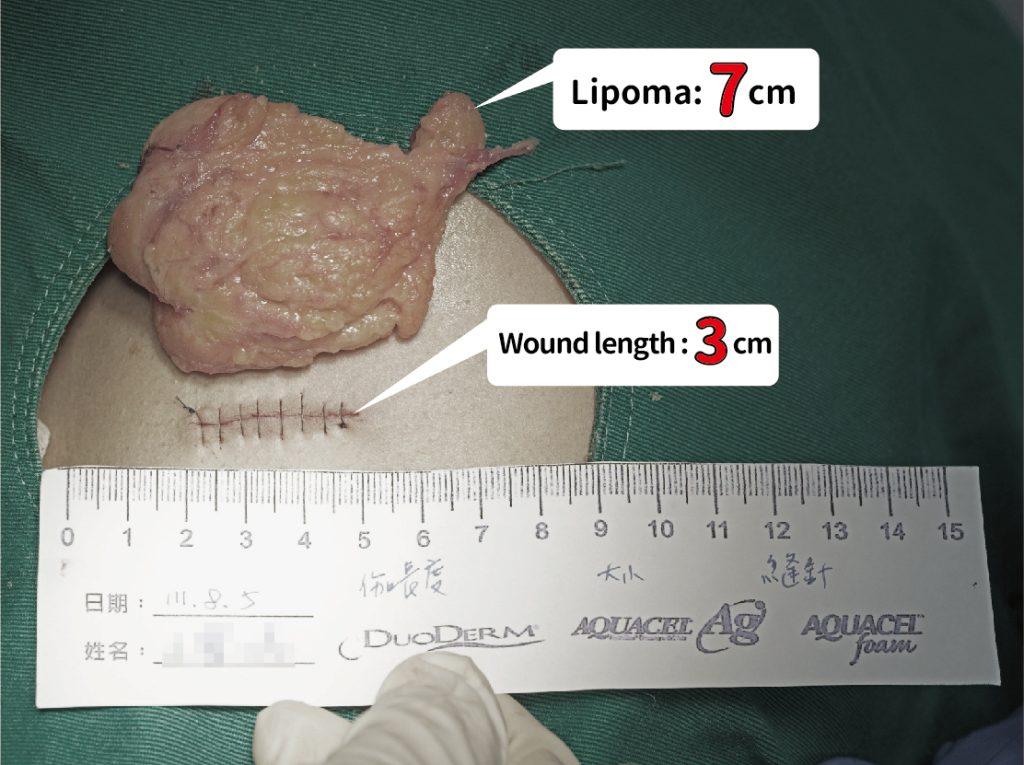
For a brief introduction to lipomas and surgical care information, please also refer to:Lius Clinic – Lipoma
